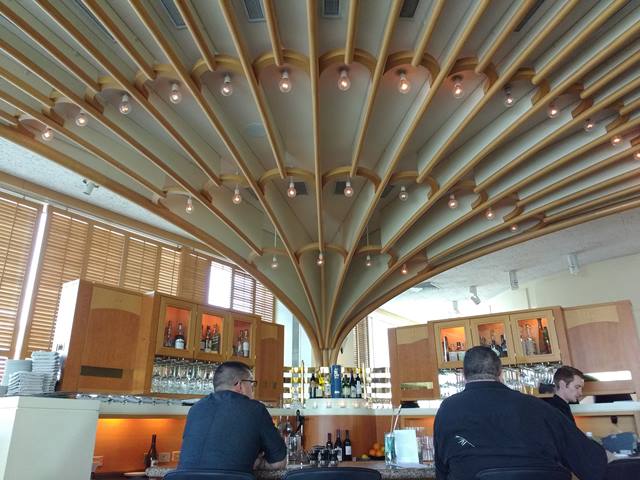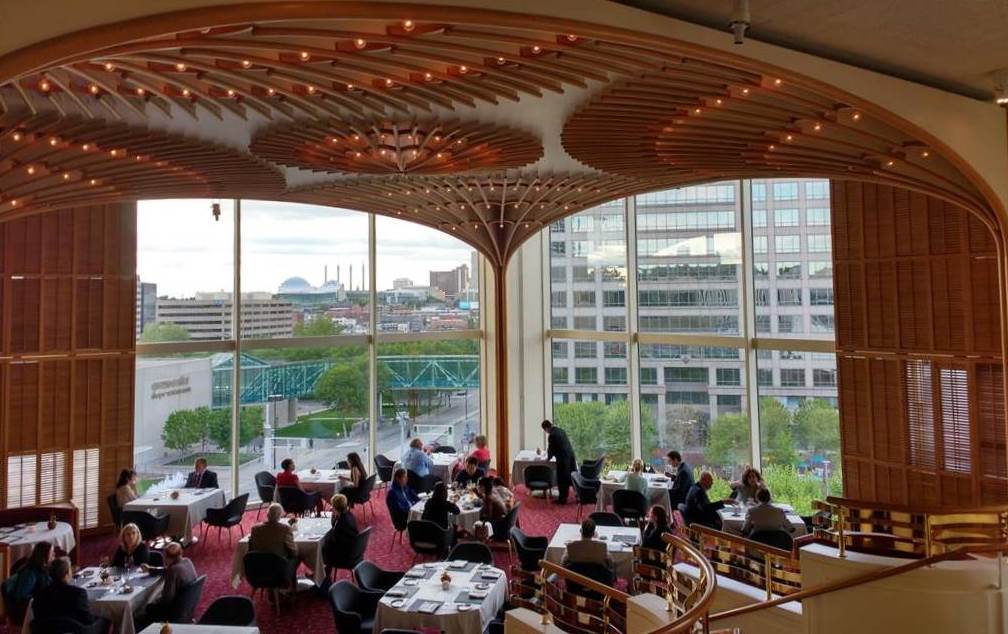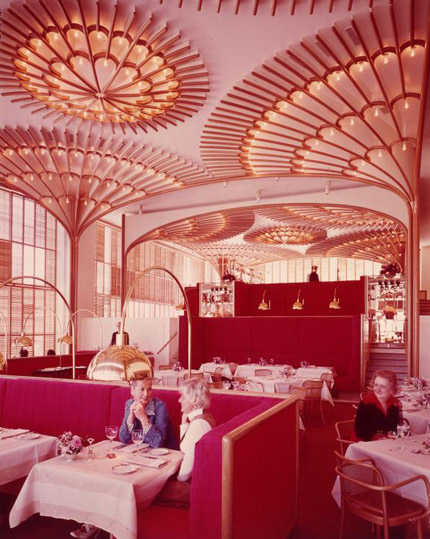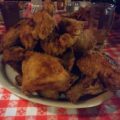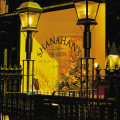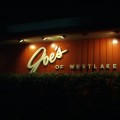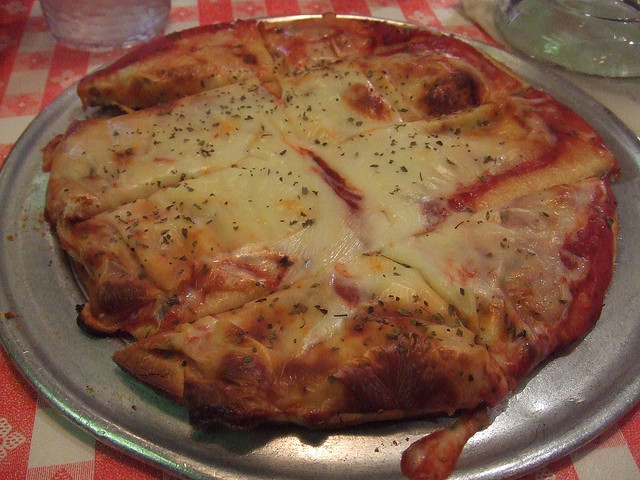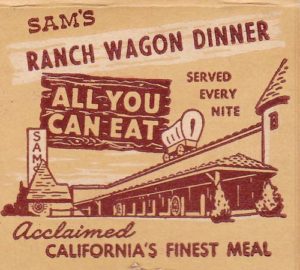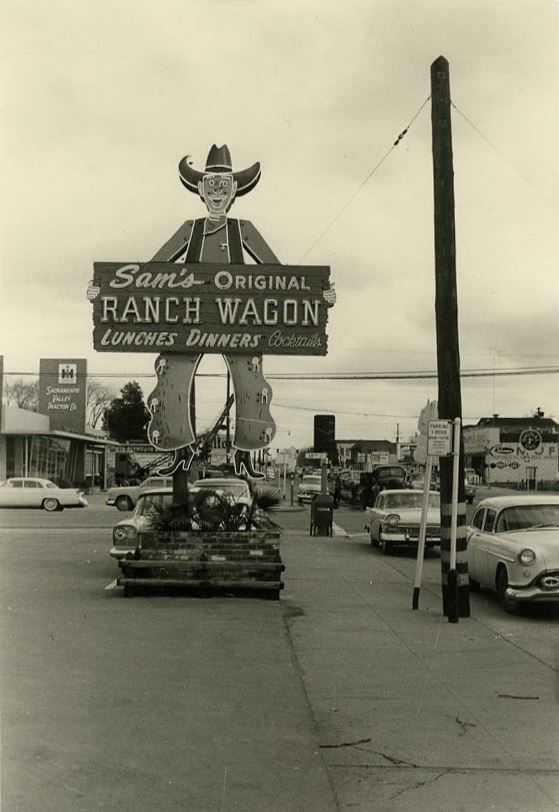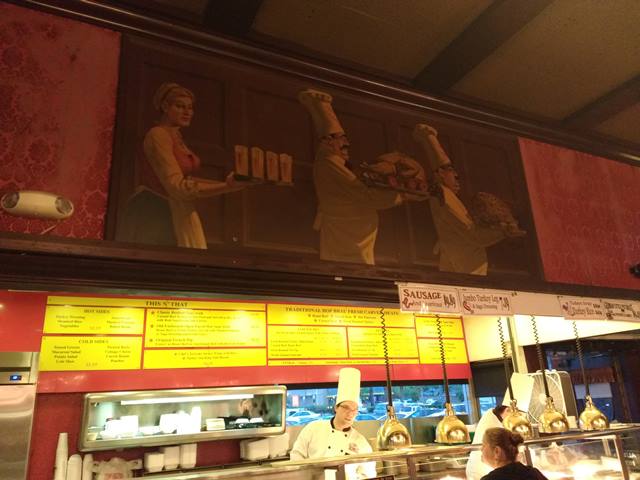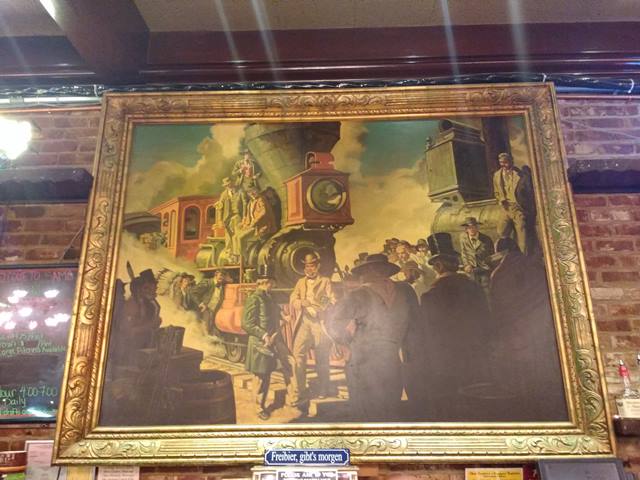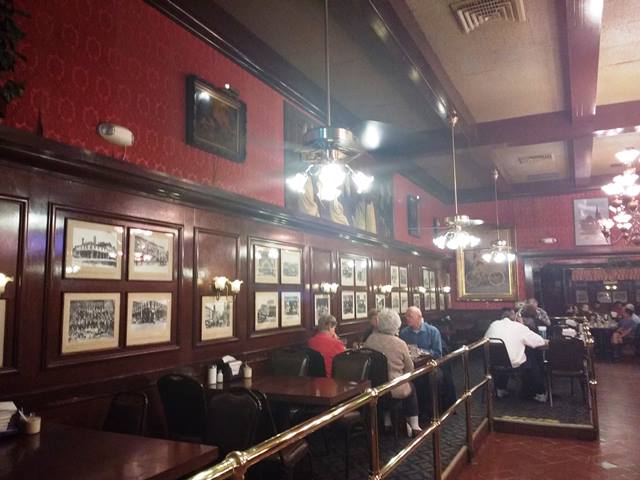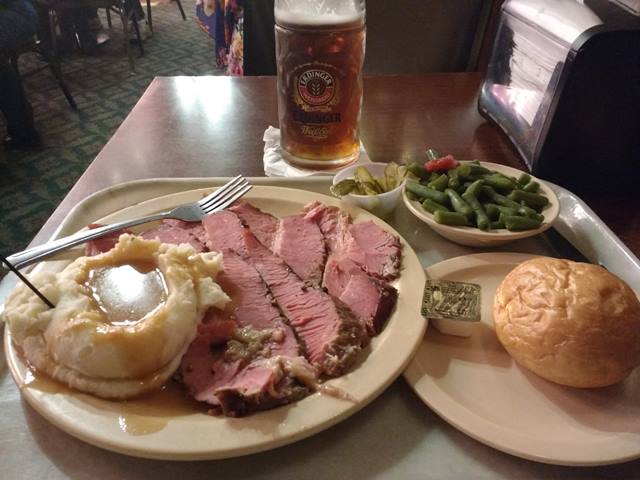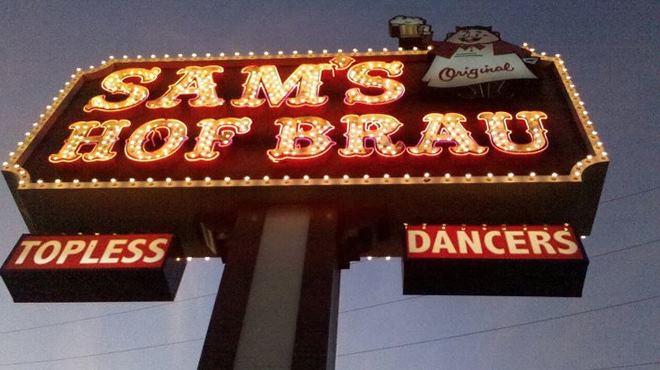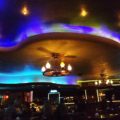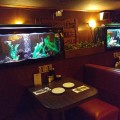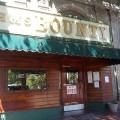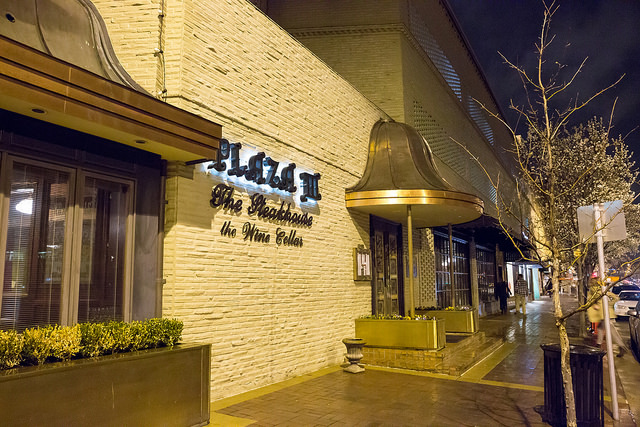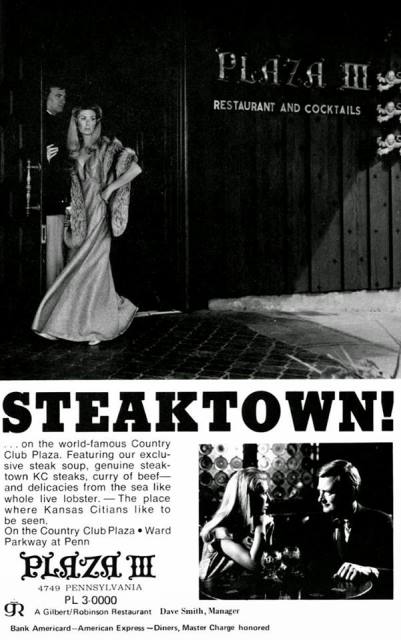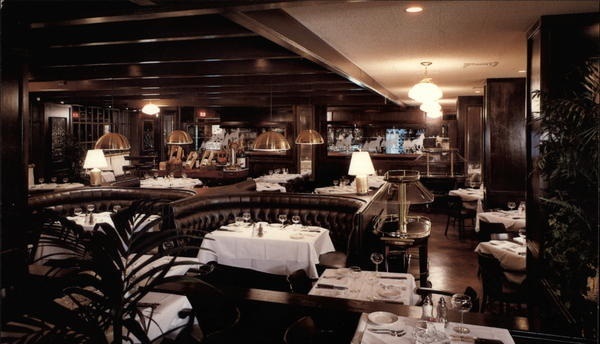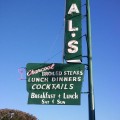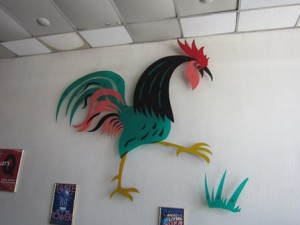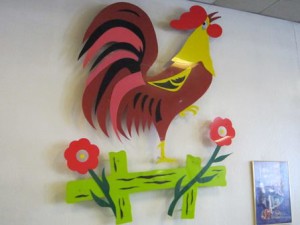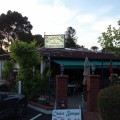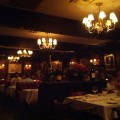Friends have often heard me complain about the limited 24 hour eatery options in the Bay Area. New York City has a few, Chicago beats NYC by a mile, but Los Angeles is tops for 24-hour dining. There are scads of 24-hour coffee shops, hamburger and hot dog stands, taco shops, ethnic eateries, and most uniquely, even some fine dining restaurants. If you can sit down to eat a high quality meal at four o’clock in the morning on white linen with real silverware and fine china, served by professional waiters in dinner jackets and ties anywhere else in the U.S. I want to know about it!
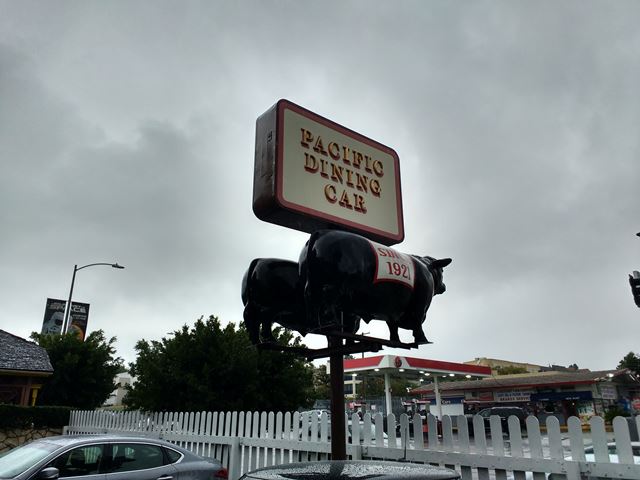
photo by Dean Curtis, 2016
Pacific Dining Car opened in 1921, when Los Angeles was booming during the Roaring Twenties. Fred and Grace “Lovey” Cook moved to LA from back east and decided to open a small restaurant that was like a railroad dining car. Many people think the original restaurant is in an actual railroad car but the Cooks had the car built to their specifications so it would be large enough to accommodate a lunch counter, some tables and chairs, and the kitchen. They outfitted it with wheels so it could be moved, which came in handy in 1923 because the land it was on at 7th & Westlake was sold, so the Cooks had to move the little café to 6th & Witmer at the western edge of downtown, where it still stands to this day, wheels and all.

Lovey’s pies became a quick hit in town and soon business was booming. In the 20s Fred Cook started serving high quality steaks from USDA prime aged beef, eventually installing his own curing box so he could age the beef on-site, a practice that continues today. The Cook’s survived the Depression and opened the successful Cook’s Steak House at 645 S Olive St. in 1935 (demolished). Lovey’s son-in-law Wes Idol ran the new venture. Both restaurants attracted many celebrities of the silver screen, writers, and even the notorious Mickey Cohen.
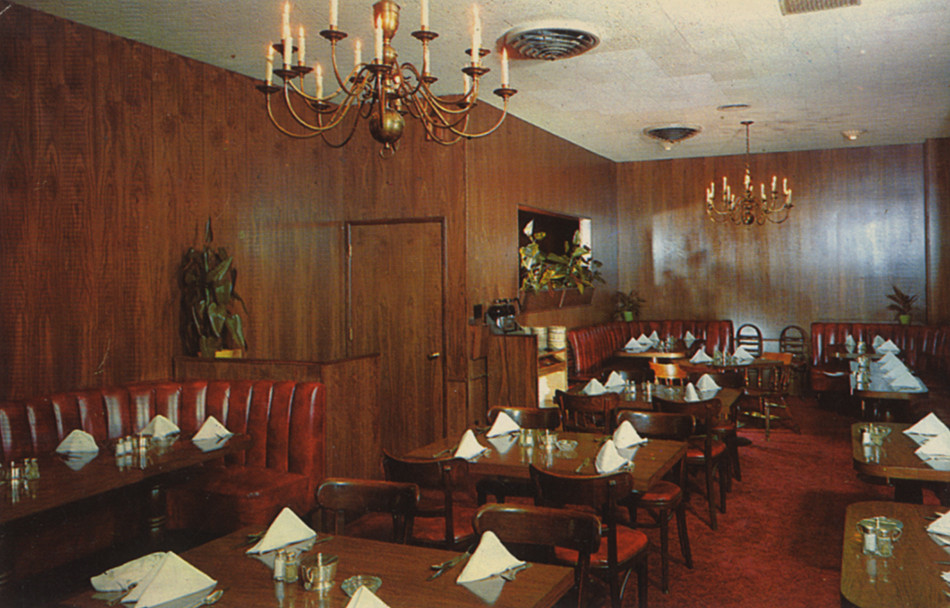
Cook’s Steak House via Pinterest
Fred passed away in 1947 and Lovey continued to run PDC 7 days a week, except when the restaurant closed for three months per year during the summer, when a sign was put at the entrance reading “Too D. hot in L.A. Gone Fishing. Why the H. don’t you go, too?”. By 1960, Lovey was over 80, so her daughter Virginia, son-in-law Wes, and grandson Wes Idol II purchased the restaurant and remodeled it during the summer closure, reopening it as a “year ’round” restaurant, adding air conditioning so it could stay open during the summertime.
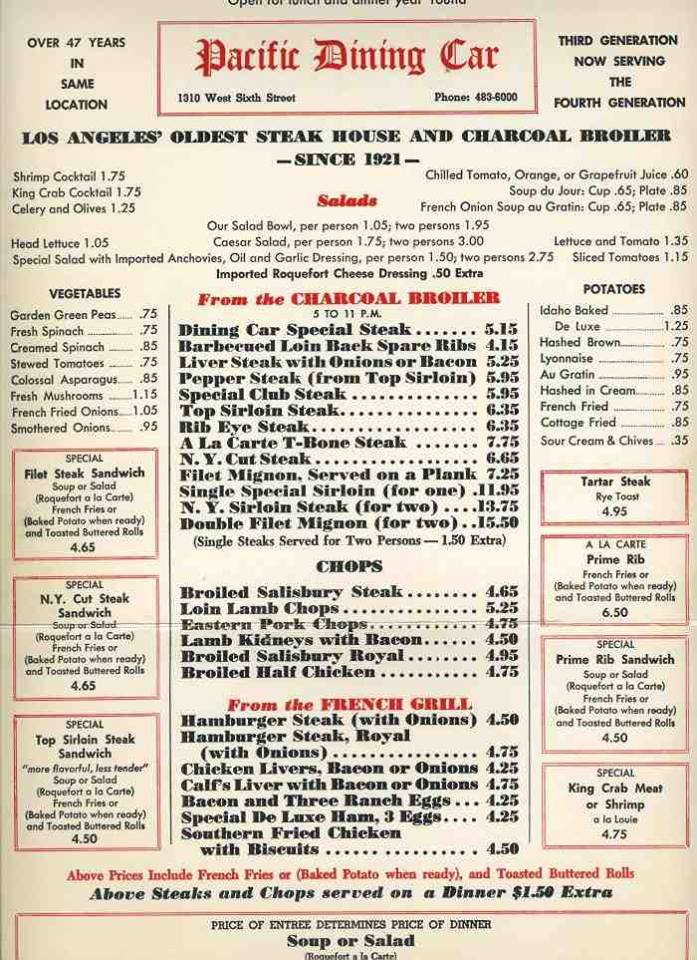
menu from 1968
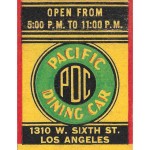
via Los Angeles Magazine
When Wes senior passed away in 1970, Wes II bought the restaurant from his mother Virginia, again remodeling it close to its present appearance. Wes II expanded the menu and wine list, while retaining the PDC standards of prime aged steaks. At one time there was also a Pacific Dining Car at 501 30th St in Newport Beach (as spotted on a vintage matchbook image; since demolished). I do not know when PDC started 24-hour service. This vintage matchbook shows limited dinner hours. But at some point it went 24-hours and in 1990 a PDC was opened in Santa Monica, also open 24-hours. These days, Wes Idol III runs PDC, amazingly owned by the same family for 95 years!

original dining room – photo by Dean Curtis, 2016
Pacific Dining Car has many dining rooms, but my favorite is the original dining car, which has been remodeled over the years to its present Victorian dining car look of varnished wood, plush high-back booths, tables with green crushed velvet chairs, windows with tasselled valances, brass luggage racks holding vintage suitcases, and classic lamps.
Past the wine room you enter the bar (with TV) and the adjacent Club Car dining room, which is decorated with many historic photos; worth a peek if you aren’t dining there.
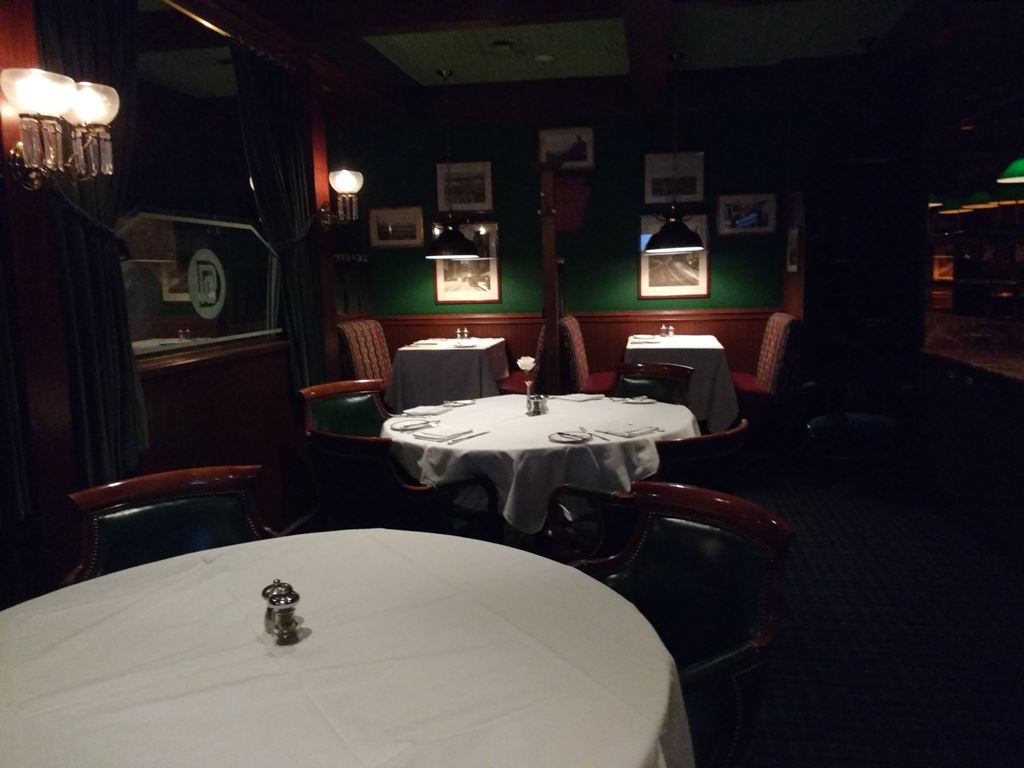
Club Car next to the bar – photo by Dean Curtis, 2016
At the other side of the original dining car, just past the kitchen, is the Northern Pacific Room, in a Craftsman style with green walls and ceiling, lots of wood, blue crushed velvet chairs, and chandeliers made from antlers. A very interesting room that was used as a film set. Also, there is the Astor Room, the Huntington Room, and the Wine Room. Wow! More photos of the the various dining rooms.
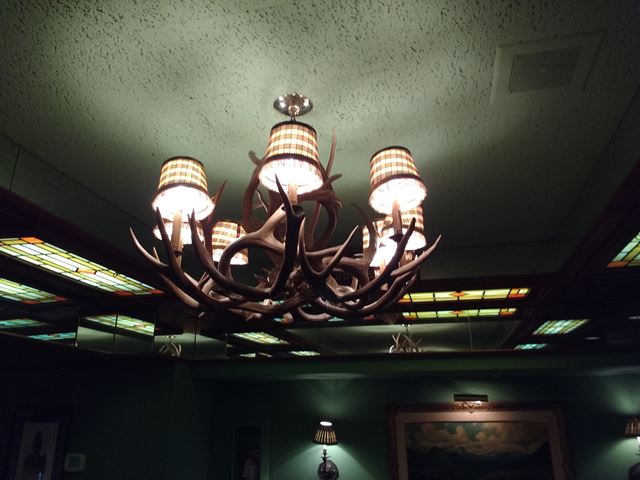
antler chandelier in Northern Pacific Room – photo by Dean Curtis, 2016
Since this is primarily a steakhouse all the menus feature steaks from prime aged corn-fed beef , but there are many other meat, seafood, and vegetable options. Breakfast is served 24 hours a day. I love their blueberry pancakes, top sirloin steak ‘n eggs, and lyonnaise potatoes. Or you could go New Orleans style and get eggs Sardou, artichoke bottoms over creamed spinach, topped with poached eggs and hollandaise sauce.

top sirloin steak ‘n eggs with lyonnaise potatoes -photo by Dean Curtis, 2016
Lunch is served from 11am to 4pm and features salads, steaks, seafood, sandwiches, and other entrees. Afternoon tea is offered daily from 3pm to 5:30pm. The dinner menu is served 24-hours a day and offers an extensive array of steak and seafood entrees and combinations. Make no mistake, PDC is an expensive restaurant. Their famous cowboy steak, a bone-in ribeye, will set you back almost $80 à la carte and their famous baseball steak, a thick top sirloin will cost you almost $50 on the dinner menu. However you can go after 11:00pm and save a lot. Their late night menu served from 11pm to 6am offers many of their popular selections at reduced prices and some include sides while their regular dinner menu counterparts may not.
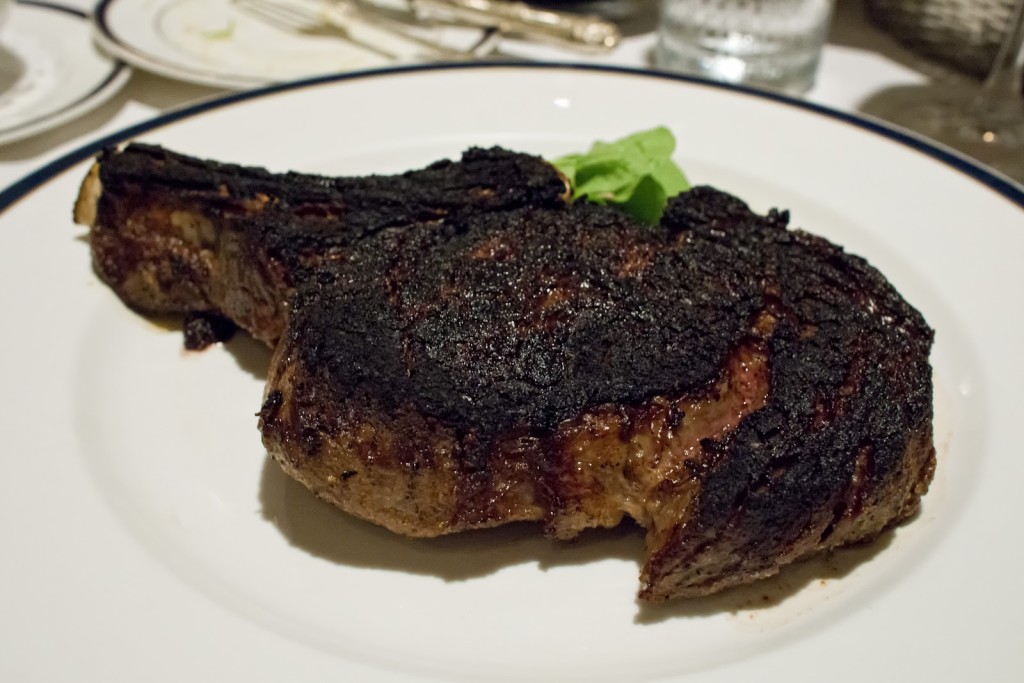
Cowboy Steak – via beefaficionado.blogspot.com
Note on their steaks: the steaks are well seasoned and cooked over charcoal with a good dark crust (as you can see above). If you don’t like your steak that well seared you should ask if they can cook it with less of a dark crust. Also, after reading a lot of online reviews complaining about the Pacific Dining Car’s baseball cut being “dry”, I have this to say: top sirloin is a beefy but relatively lean cut with a somewhat chewy texture. I love a good top sirloin for a steak-on-a-budget. But it’s not as well marbled as say a ribeye or strip steak so it’s not as juicy and it doesn’t have the melt-in-your-mouth feel of more fatty cuts. So don’t order the baseball steak if a chewy, beefy steak doesn’t appeal to you. I found my aged top sirloin served with eggs to be very flavorful!
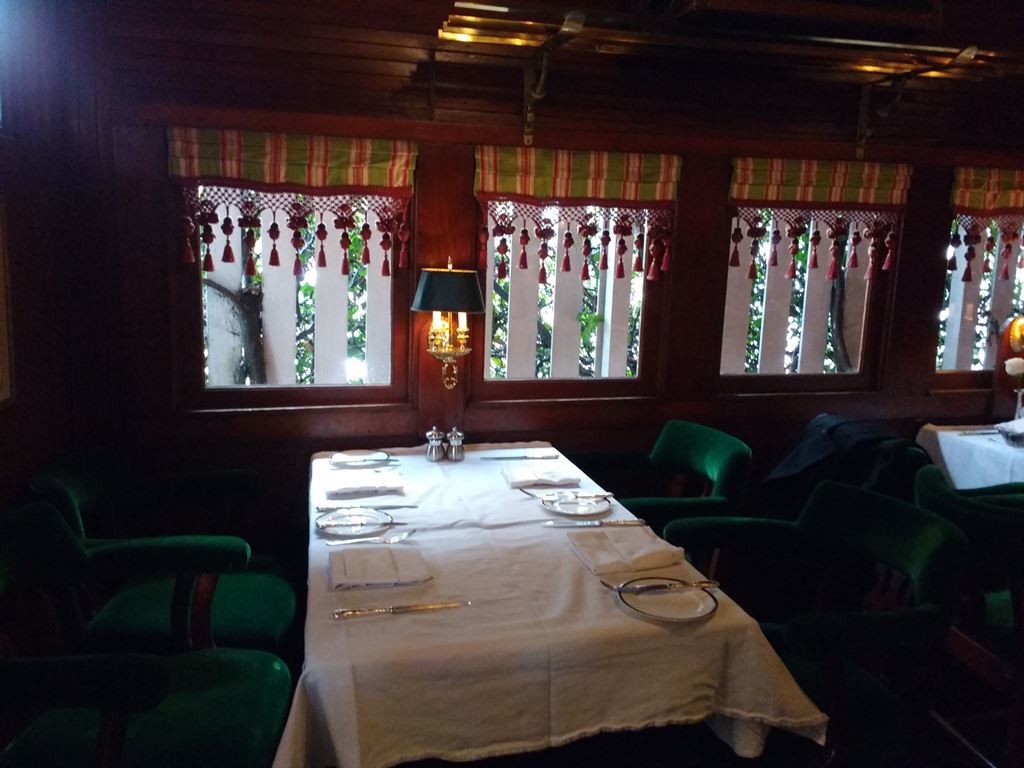
photo by Dean Curtis, 2016
The service is excellent: genteel, old fashioned, refined. Which makes the entire experience from a simpler, less hectic time. The crisp white linens, the real polished silverware and the fine china remind me of dining in a railroad dining car during the streamlined train era before Amtrak (luckily I was able to experience it in the 1970s on board the Denver and Rio Grande Western’s Zephyr, a remnant of the California Zephyr that held on until 1983). There is no music playing at the restaurant; just the sound of low conversation and polite dining. If you go late at night please don’t arrive drunk and make a lot of noise.
Sure, Pacific Dining Car is pricey, but it’s also priceless.
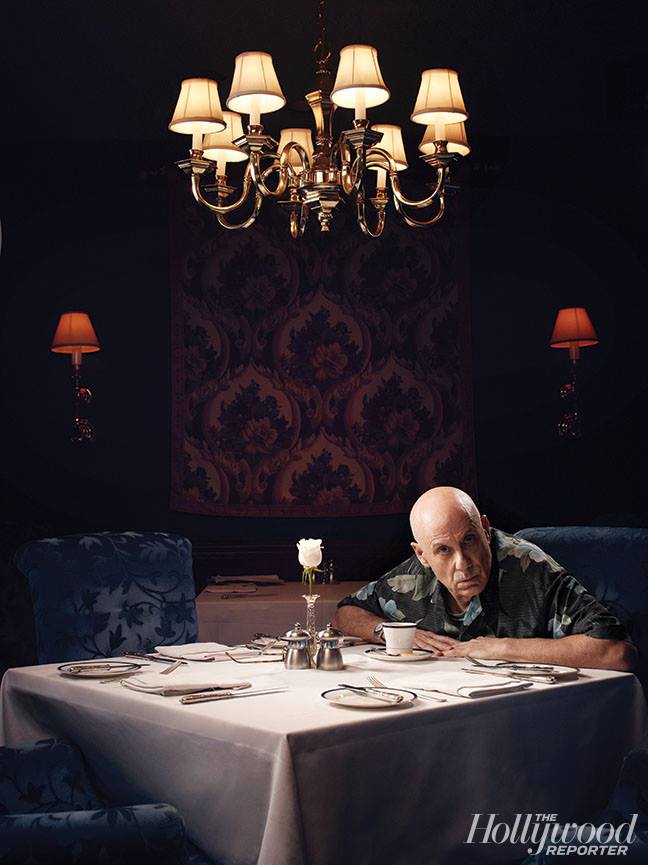
James Ellroy in the Astor Room at Pacific Dining Car – via the Hollywood Reporter
James Ellroy, author of L.A. Confidential and other books, is a huge fan of Pacific Dining Car!
Pacific Dining Car
1310 W 6th St, Los Angeles, CA 90017
(213) 483-6000
2700 Wilshire Blvd, Santa Monica, CA 90403
(310) 453-4000
Open 24 hours with breakfast and dinner menus; lunch 11am-4pm; tea 3pm-5:30pm; late night menu 11pm-6am – at both locations
